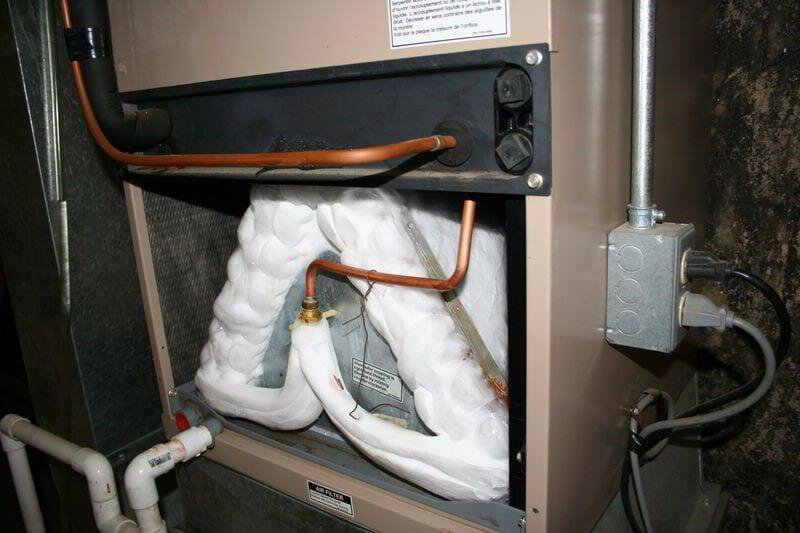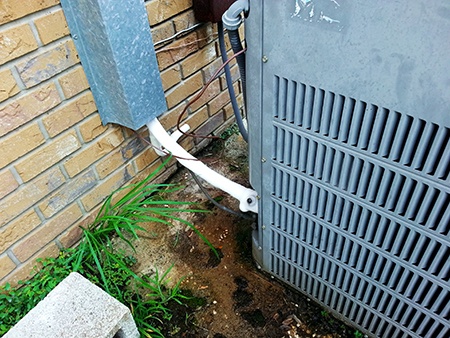We've come across this post involving Why Is Ice On My Outside Air Conditione down the page on the web and thought it made sense to share it with you on this site.

Introduction
Finding that your air conditioner pipe is iced up can be worrying, specifically during hot summertime when you rely upon your air conditioner the most. Comprehending what to do in such a scenario is vital to prevent additional damage to your cooling system and ensure your comfort indoors.
Understanding the Causes
Numerous variables can add to the cold of an air conditioning pipe. Understanding these reasons can assist you address the concern successfully.
Lack of Airflow
One typical cause of an icy air conditioning pipeline is inadequate air flow. When the airflow over the evaporator coil is limited, it can cause the coil to drop below freezing temperature, bring about ice formation on the pipeline.
Reduced Refrigerant Levels
Inadequate cooling agent levels in your air conditioning system can additionally lead to an icy pipeline. Low refrigerant degrees can create the pressure in the system to drop, resulting in the cold of dampness on the evaporator coil.
Cold Weather Conditions
In chillier environments, freezing temperature levels outside can add to the cold of air conditioning pipes. If your a/c device is not correctly insulated or if there are leakages in the ductwork, cold air can penetrate the system, causing the pipe to ice up.
Dirty Air Filters
Filthy or blocked air filters can restrict air movement in your air conditioner system, leading to different concerns, including a frozen pipe. It's important to change or clean your air filters frequently to guarantee correct air movement and protect against ice accumulation.
Indications of a Frozen AC Pipe
Identifying the indications of a frozen a/c pipe is vital for prompt activity.
Decreased Airflow
If you see a significant reduction in air flow from your vents, it can indicate a frozen pipeline.
Ice Buildup on the Pipe
Noticeable ice buildup on the refrigerant line or the evaporator coil is a clear indicator of an icy air conditioner pipe.
Odd Sounds from the Unit
Uncommon audios, such as hissing or gurgling, coming from your a/c device can signal that there's ice present on the pipe.
Immediate Actions to Take
When faced with an icy air conditioning pipe, it's necessary to act swiftly to avoid more damages to your air conditioning system.
Shutting off the a/c
The primary step is to shut off your ac unit to stop the system from running and worsening the problem.
Checking for Blockages
Examine the location around the interior system for any type of obstructions that might be blocking air movement, such as furniture or drapes.
Defrosting the Pipe
You can make use of mild methods like positioning towels soaked in warm water around the icy pipe to assist thaw it slowly.
Preventive Measures
Taking safety nets can help avoid future events of an icy AC pipeline.
When DIY Methods Fail
If your efforts to thaw the pipeline or address various other problems are not successful, it's time to employ a professional.
Relevance of Hiring a Professional HVAC Technician
A certified HVAC technician has the proficiency and tools required to detect and repair concerns with your air conditioner system safely and successfully.
Routine Maintenance Checks
Arrange normal upkeep get in touch with a specialist HVAC specialist to ensure that your AC system is running efficiently.
Transforming Air Filters
Consistently change or clean your air filters to stop air movement restrictions and keep ideal performance.
Shielding Exposed Pipes
If your air conditioning pipes are subjected to cold temperature levels, think about shielding them to avoid cold during cold weather.
Looking For Professional Help
If DIY techniques fall short to resolve the problem or if you're unclear regarding just how to continue, it's ideal to look for help from a qualified HVAC technician.
Conclusion
Handling an icy air conditioner pipeline can be a frustrating experience, but recognizing how to respond can assist minimize damages and restore comfort to your home. By recognizing the causes, recognizing the indications, and taking timely activity, you can efficiently resolve the issue and prevent future occurrences.
What to Do If Your AC Line Is Frozen
Make Sure All Supply and Return Air Vents Are Open
If you notice problems with airflow, the first thing you should do is check your supply and return vents. Supply vents distribute clean, conditioned air throughout your home. As this air becomes stale, it’s pulled into the return vent, where it’s reconditioned before being sent back out through the supply vent.
When these vents are closed, air won’t flow in the home. Before examining your AC, check the vents in every room and ensure they’re all open.
Check for a Dirty Air Filter
Another possible cause of limited airflow is a dirty air filter. Your air conditioner’s filters catch elements you don’t want to breathe in, such as dirt and dust. Over time, filters can become clogged, ultimately blocking air from flowing in and out. The lack of airflow can then cause the entire coil to freeze and will completely restrict any air from moving through it. The AC may need to be powered off for one to two days to allow the coil to thaw after replacing the filter to allow proper functioning of the unit. This debris can also accumulate on your AC’s evaporator coil, requiring a more serious repair. In general, air filters should be cleaned regularly (about every two weeks).
Assess Your Outdoor Unit
In addition to checking your AC, assessing the outdoor unit is a good idea. Also known as the condensing unit, it works with your interior unit to release heat outside. An issue with the outdoor unit can result in rising internal temperatures.
Overgrown Shrubs or Clogged Leaves
From leaves and twigs to shrubs and debris, there’s no shortage of outdoor elements that can accumulate around your condensing unit. When these elements get lodged inside the unit, they can block airflow. Fortunately, removing the blockage can solve the problem.
Sounds of a Broken Fan
Shrubs and leaves aren’t the only things that can impede your outdoor unit’s airflow. If the fan is broken, the unit won’t be able to properly get rid of heat — which means the internal temperature won’t go down. First, make sure the fan is spinning. If it is, check for the following sounds of a broken fan:
Buzzing Rattling Screeching Hissing Clicking Preventative Measures
Nobody wants to deal with a frozen AC line. In addition to causing problems with your air conditioner, they require professional repairs. On the bright side, there are preventative measures you can take to help ensure this issue doesn’t arise in the first place.
https://www.coopergreenteam.com/blog/what-to-do-if-ac-line-frozen

Hopefully you enjoyed reading our piece on What Causes AC Pipes To Freeze?. Thanks so much for finding the time to read through our blog post. Those who enjoyed our page please remember to pass it around. Thank-you for going through it.
Contact Us Now